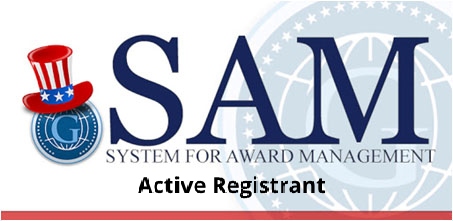The U.S. electric power industry sits at the center of an unprecedented policy storm. Massive federal funding for grid upgrades, crowded generator-interconnection queues, and a patchwork of state clean energy mandates are reshaping the rules under which utilities operate. At the same time, watchdog groups and legislators scrutinize how power companies influence public policy, demanding greater transparency and consumer protection. To thrive in this environment, utilities have begun overhauling their government-affairs playbooks. The new watchwords are collaboration, transparency, and data-driven persuasion. Coalitions that once seemed implausible—such as utilities and environmental nonprofits, customer councils, and trade associations—are now commonplace. This Energy Brief examines the current advocacy landscape and explores how the strategies emerging in 2025 will likely evolve throughout the remainder of the decade.
The Policy Pressure Cooker
Today’s regulatory agenda is dominated by three intertwined challenges: expanding long-distance transmission, unclogging interconnection queues, and meeting increasingly ambitious decarbonization targets. The Department of Energy’s Grid Deployment Office now administers more than $22 billion for grid projects, and its Transmission Facilitation Program offers loan guarantees and capacity contracts to jump-start multi-state lines. In parallel, the Federal Energy Regulatory Commission (FERC) is monitoring implementation of Order 2023, its sweeping overhaul of the generator-interconnection process, and finalized its long-term regional transmission planning rule (Order 1920) in May 2024; utilities are now filing plans in compliance with this Order.
These initiatives arrive as the queue of proposed generation and storage projects has ballooned to more than 2.5 TW nationwide, a figure that dwarfs today’s installed capacity. Projections suggest the queue will continue to grow unless siting and interconnection hurdles are resolved. Meanwhile, at least twenty-five states have established statutory or executive targets for 90-100% carbon-free electricity between 2030 and 2045. Utilities face intense pressure to modernize the grid quickly without sending customer bills soaring. That tension between urgent investment and affordability frames almost every policy fight of 2025.
Collaboration as Competitive Advantage
Utilities have discovered that coalition politics can yield better outcomes than solitary lobbying when faced with simultaneous demands for reliability, decarbonization, and cost containment. A vivid illustration came when more than forty organizations, from the American Clean Power Association to labor unions and Berkshire Hathaway Energy, jointly urged Congress to boost transmission funding. Similar alliances under the “Transmission Possible” banner now campaign for permitting reforms in statehouses nationwide, pairing utility executives with environmental advocates on the same podium.
Utilities are increasingly filing joint comments inside FERC dockets with public-power entities, consumer advocates, and clean-energy developers. For example, a consensus proposal on transmission cost management united investor-owned utilities with environmental and consumer groups, persuading commissioners that new spending safeguards could coexist with aggressive build-outs. The negotiation occurs before the filing; by the time the proposal reaches regulators, most stakeholders have already supported it. The logic is simple: shared authorship breeds regulatory confidence and reduces the risk of litigation.
Empowering Customers and Communities
Utilities have also concluded that successful advocacy begins at home. Large companies now convene Customer Advisory Councils composed of industrial giants, small businesses, and community leaders. CenterPoint Energy’s Houston council meets throughout the year to vet grid-modernization plans and rate-design changes. Feedback from these sessions is distilled into regulatory filings, allowing the utility to demonstrate that customers shaped the proposal from its inception.
Community engagement extends beyond the boardroom. After a corruption scandal rocked Ohio’s power sector earlier in the decade, FirstEnergy agreed to create a public advisory council to monitor the company’s policy positions. Elsewhere, municipal utilities host neighborhood climate-resilience workshops, then cite those discussions when seeking cost recovery for wildfire-hardening or storm-resiliency projects. The message to regulators is clear: these investments were co-designed with those who pay the bills.
State legislatures are reinforcing the trend. Several clean-energy laws enacted in 2024 and 2025 require utilities to fund public intervenors and quantify the impacts of equity in resource plans. Rather than viewing the mandate as a burden, forward-thinking utilities embrace it as an opportunity to build a coalition of supporters who can testify alongside them in commission hearings. When regulators see city sustainability officers, low-income advocates, and utility executives united behind the same filing, the approval odds increase sharply.
Rethinking the Government-Affairs Machine
This collaborative orientation is changing how utilities staff and run their advocacy teams. Companies now recruit sustainability experts, community-relations professionals, and data scientists to complement traditional lobbyists. Avangrid, for instance, reorganized its government affairs department in late 2024 to emphasize stakeholder engagement and customer outcomes, crediting the new structure with helping to pass utility debt securitization legislation in New York.
Industry trade groups are also evolving. The Edison Electric Institute’s recent leadership transition signaled an intent to forge bipartisan alliances and engage constructively with regulators rather than reflexively opposing climate policy. Behind the scenes, member utilities are pressuring the association to support grid modernization funding and acknowledge state decarbonization timelines that many companies have already adopted internally.
Transparency is another hallmark of the new advocacy model. After revelations that ratepayer dollars sometimes underwrote political campaigns, eighteen states have introduced bills to bar utilities from recovering lobbying costs in customer rates, and a handful have already enacted such bans. Utilities now publish annual political spending disclosures and separate shareholder-funded advocacy from regulated operations. Lobbyists still advocate but do so in daylight, armed with empirical evidence and coalitions of unlikely allies.
Digital tools amplify these efforts. Modern government affairs teams map the potential economic benefits of projects down to the legislative district, survey customer attitudes in real-time, and mobilize supportive voices through online portals. Data visualizations illustrating congestion costs or reliability risks travel well on social media and in committee hearings. What once took months of door-to-door persuasion can now be orchestrated in a week of targeted outreach.
Looking Forward: Projections to 2030
The forces driving today’s advocacy reinvention show no sign of abating. FERC is expected to finalize its long-term transmission-planning rule in 2025 or early 2026, likely mandating multi-state coordination and new cost-sharing formulas. Utilities that have already built trust with regional partners and consumer groups will be better positioned to negotiate favorable cost allocations.
Regardless of partisan control, Congress will continue debating additional grid-funding measures and streamlined permitting. Coalitions that blend corporate, labor, environmental-justice, and consumer voices are the best to influence legislative text. At the state level, ratepayer-funded lobbying bans are poised to spread, encouraging utilities to disclose their spending and justify advocacy expenditures as shareholder risk rather than a customer burden.
On the technology front, analytics platforms that track real-time queue movements, project attrition, and distribution-level hosting capacity will give utilities quantitative leverage in interconnection and siting debates. Customer councils may evolve into standing stakeholder boards equipped with their consultants, mirroring European “co-decision” models.
Perhaps the most profound shift will be cultural. As young professionals steeped in climate science and stakeholder engagement rise through corporate ranks, the default posture of utility advocacy is likely to become one of bridge-building. Executives who once feared public collaboration as threatening shareholder value increasingly view it as a prerequisite for regulatory success.
Conclusion
The American electric grid will require trillions of dollars in new infrastructure by mid-century, and every significant investment necessitates regulatory approval. Utilities have learned that permission is granted more readily when diverse stakeholders help craft the underlying proposal and when the process is transparent, data-rich, and demonstrably in the public interest.
Instead of lobbying from the shadows, utilities now seek to lead broad coalitions, consult with customers early and often, and support their arguments with rigorous analysis. These practices are not mere public-relations gestures but strategic adaptations to a policy environment where credibility and consensus carry more weight than volume and velocity of political spending.
If current trajectories hold, the winners of the next decade will be utilities that perfect the art of collaborative advocacy—companies that can speak the languages of investors, regulators, environmentalists, and everyday consumers with equal fluency. Their reward will be a smoother path to building the resilient, low-carbon grid that the 21st-century economy demands.



